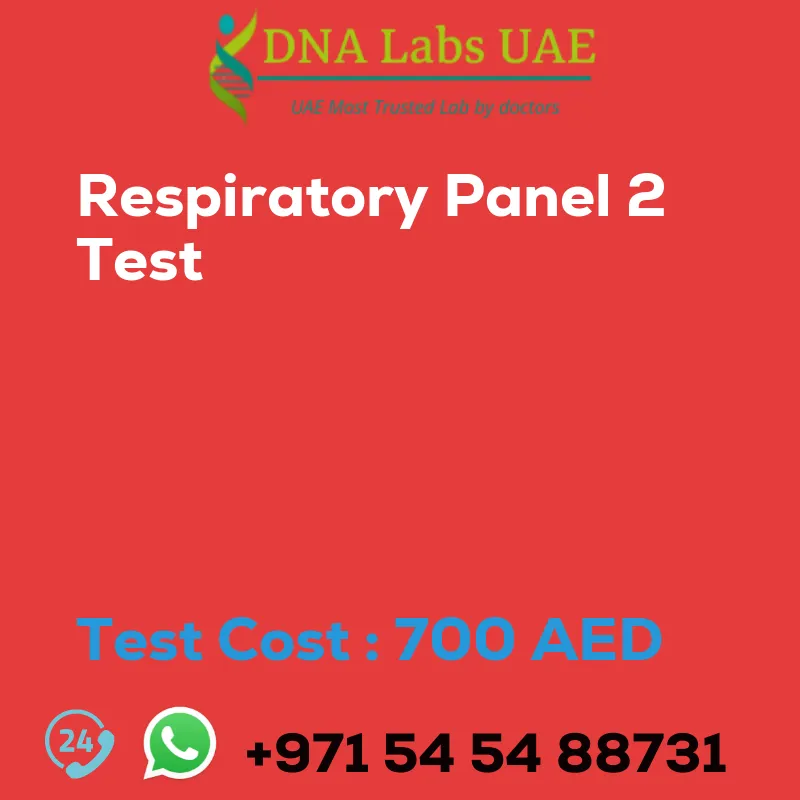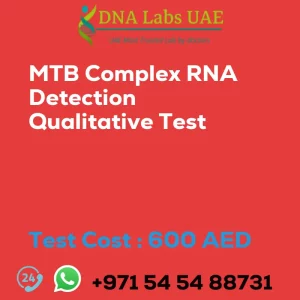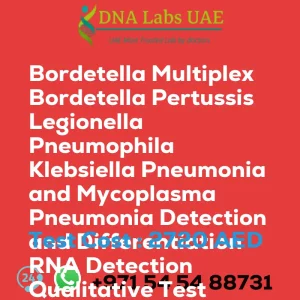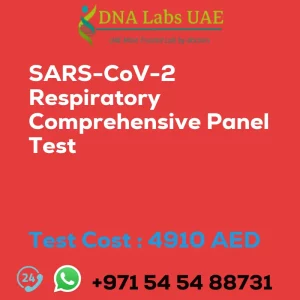RESPIRATORY PANEL 2 Test Cost AED:700.0 | DNA Labs UAE
Are you experiencing symptoms such as coughing, sneezing, fever, and difficulty breathing? The RESPIRATORY PANEL 2 test offered by DNA Labs UAE can help diagnose the cause of your respiratory infection. This blog will provide detailed information about the test, its components, cost, and how it can help healthcare providers make informed decisions regarding treatment options and infection control measures.
Test Name: RESPIRATORY PANEL 2 Test
Components:
- Parainfluenza viruses 2, 3 & 4
Price: 700.0 AED
Sample Condition:
Submit Throat / Nasal swabs in special collection medium available from LPL OR 5 mL (3 mL min.) Sputum / Bronchoalveolar lavage fluid in a sterile screw capped container. Ship refrigerated or frozen.
Report Delivery:
Sample Mon / Wed / Fri by 9 am; Report Tue / Thu / Sat
Method: Real Time PCR
Test Type: Infections
Doctor: Physician, Chest Physician
Test Department: MOLECULAR DIAGNOSTICS
Pre Test Information:
No special preparation required
Test Details:
The RESPIRATORY PANEL 2 test is a diagnostic test used to detect and identify various respiratory viruses and bacteria that can cause respiratory infections. It is typically performed on patients who present with symptoms such as coughing, sneezing, fever, and difficulty breathing.
The test involves collecting a sample from the patient’s respiratory tract, usually through a nasal or throat swab. The sample is then analyzed using molecular techniques, such as polymerase chain reaction (PCR), to detect the presence of specific viral and bacterial genetic material.
The RESPIRATORY PANEL 2 test can detect a wide range of respiratory pathogens, including influenza viruses A and B, respiratory syncytial virus (RSV), human metapneumovirus (hMPV), adenovirus, rhinovirus, coronavirus, Bordetella pertussis (whooping cough), Mycoplasma pneumoniae, and Chlamydophila pneumoniae.
By identifying the specific pathogens causing the respiratory infection, healthcare providers can make informed decisions regarding treatment options and infection control measures. The test results can also help guide public health efforts in monitoring and managing respiratory outbreaks.
It is important to note that the RESPIRATORY PANEL 2 test is not a screening test for all respiratory infections, and it may not detect all possible pathogens. Other tests, such as culture or serology, may be necessary in certain cases. Additionally, the test results should be interpreted in conjunction with the patient’s clinical presentation and other laboratory findings.
| Test Name | RESPIRATORY PANEL 2 Test |
|---|---|
| Components | *Parainfluenza viruses 2, 3 & 4 |
| Price | 700.0 AED |
| Sample Condition | Submit Throat \/ Nasal swabs in special collection medium available from LPL OR 5 mL (3 mL min.) Sputum \/ Bronchoalveolar lavage fluid in a sterile screw capped container. Ship refrigerated or frozen. |
| Report Delivery | Sample Mon / Wed / Friby 9 am; Report Tue / Thu / Sat |
| Method | Real Time PCR |
| Test type | Infections |
| Doctor | Physician, Chest Physician |
| Test Department: | MOLECULAR DIAGNOSTICS |
| Pre Test Information | No special preparation required |
| Test Details |
The Respiratory Panel 2 test is a diagnostic test used to detect and identify various respiratory viruses and bacteria that can cause respiratory infections. It is typically performed on patients who present with symptoms such as coughing, sneezing, fever, and difficulty breathing. The test involves collecting a sample from the patient’s respiratory tract, usually through a nasal or throat swab. The sample is then analyzed using molecular techniques, such as polymerase chain reaction (PCR), to detect the presence of specific viral and bacterial genetic material. The Respiratory Panel 2 test can detect a wide range of respiratory pathogens, including influenza viruses A and B, respiratory syncytial virus (RSV), human metapneumovirus (hMPV), adenovirus, rhinovirus, coronavirus, Bordetella pertussis (whooping cough), Mycoplasma pneumoniae, and Chlamydophila pneumoniae. By identifying the specific pathogens causing the respiratory infection, healthcare providers can make informed decisions regarding treatment options and infection control measures. The test results can also help guide public health efforts in monitoring and managing respiratory outbreaks. It is important to note that the Respiratory Panel 2 test is not a screening test for all respiratory infections, and it may not detect all possible pathogens. Other tests, such as culture or serology, may be necessary in certain cases. Additionally, the test results should be interpreted in conjunction with the patient’s clinical presentation and other laboratory findings. |








